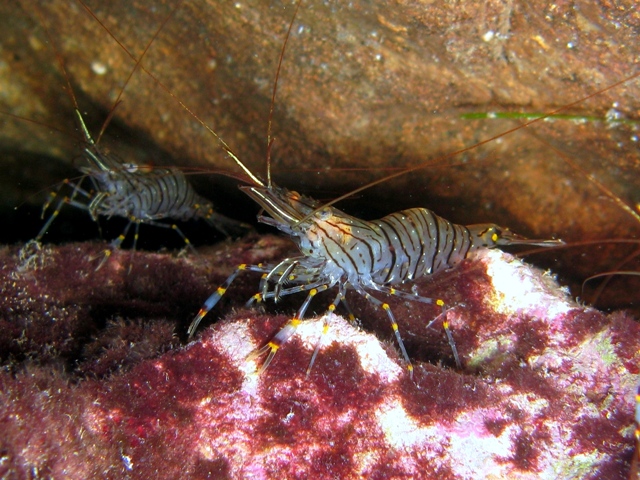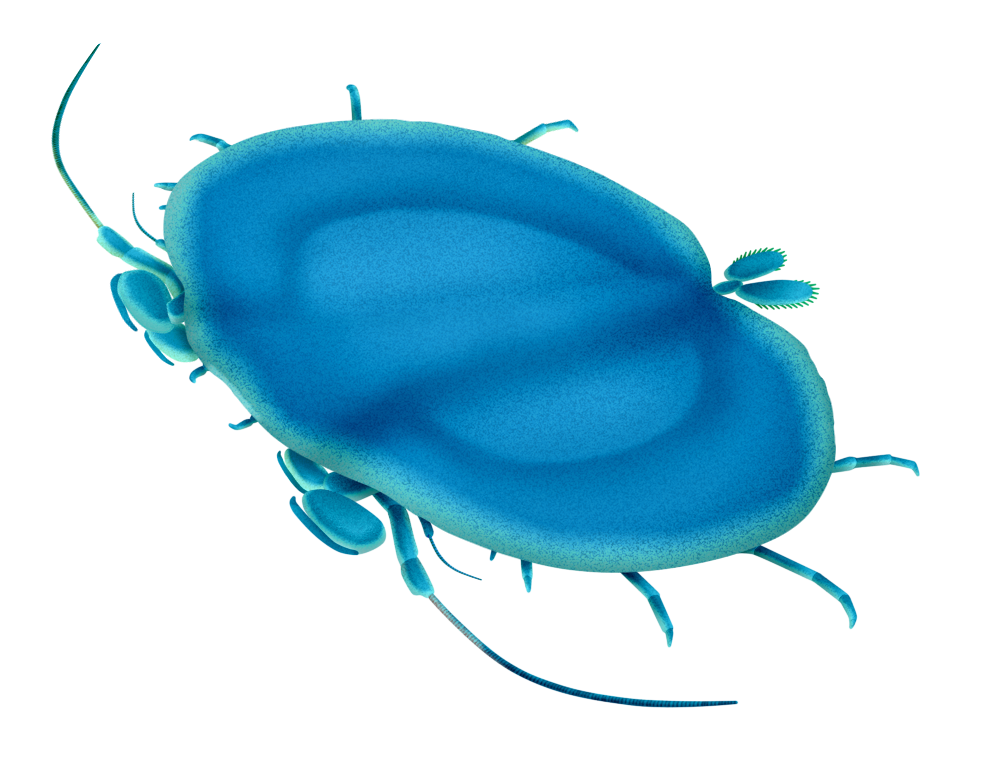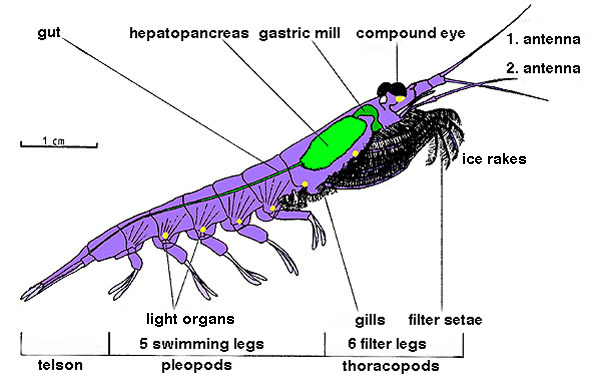|
Crustaceans
Crustaceans (from Latin meaning: "those with shells" or "crusted ones") are invertebrate animals that constitute one group of Arthropod, arthropods that are traditionally a part of the subphylum Crustacea (), a large, diverse group of mainly aquatic animal, aquatic arthropods including decapoda, decapods (shrimps, prawns, crabs, lobsters and crayfish), ostracoda, seed shrimp, branchiopoda, branchiopods, argulidae, fish lice, krill, remipedes, isopods, barnacles, copepods, Mysida, opossum shrimps, amphipods and mantis shrimp. The crustacean group can be treated as a subphylum under the clade Mandibulata. It is now well accepted that the Hexapoda, hexapods (insects and entognathans) emerged deep in the Crustacean group, with the completed pan-group referred to as Pancrustacea. The three classes Cephalocarida, Branchiopoda and Remipedia are more closely related to the hexapods than they are to any of the other crustaceans (oligostracans and multicrustaceans). The 67,000 described spec ... [...More Info...] [...Related Items...] OR: [Wikipedia] [Google] [Baidu] |
Arthropod
Arthropods ( ) are invertebrates in the phylum Arthropoda. They possess an arthropod exoskeleton, exoskeleton with a cuticle made of chitin, often Mineralization (biology), mineralised with calcium carbonate, a body with differentiated (Metamerism (biology), metameric) Segmentation (biology), segments, and paired jointed appendages. In order to keep growing, they must go through stages of moulting, a process by which they shed their exoskeleton to reveal a new one. They form an extremely diverse group of up to ten million species. Haemolymph is the analogue of blood for most arthropods. An arthropod has an open circulatory system, with a body cavity called a haemocoel through which haemolymph circulates to the interior Organ (anatomy), organs. Like their exteriors, the internal organs of arthropods are generally built of repeated segments. They have ladder-like nervous systems, with paired Anatomical terms of location#Dorsal and ventral, ventral Ventral nerve cord, nerve cord ... [...More Info...] [...Related Items...] OR: [Wikipedia] [Google] [Baidu] |
Shrimp
A shrimp (: shrimp (American English, US) or shrimps (British English, UK)) is a crustacean with an elongated body and a primarily Aquatic locomotion, swimming mode of locomotion – typically Decapods belonging to the Caridea or Dendrobranchiata, although some Shrimp#Non-decapods, crustaceans outside of this order are also referred to as "shrimp". Any small crustacean may also be referred to as "shrimp", regardless of resemblance. More narrow definitions may be restricted to Caridea, to smaller species of either of the aforementioned groups, or only the Marine life, marine species. Under a broader definition, ''shrimp'' may be synonymous with prawn, covering stalk-eyed swimming crustaceans with long, narrow muscular tails (Abdomen#Arthropoda, abdomens), long whiskers (Antenna (biology), antennae), and slender, Biramous, biramous legs. They swim forward by paddling the swimmerets on the underside of their abdomens, although their escape response is typically repeated flicks wit ... [...More Info...] [...Related Items...] OR: [Wikipedia] [Google] [Baidu] |
Lobster
Lobsters are Malacostraca, malacostracans Decapoda, decapod crustaceans of the family (biology), family Nephropidae or its Synonym (taxonomy), synonym Homaridae. They have long bodies with muscular tails and live in crevices or burrows on the sea floor. Three of their five pairs of legs have claws, including the first pair, which are usually much larger than the others. Highly prized as seafood, lobsters are economically important and are often one of the most profitable commodities in the coastal areas they populate. Commercially important species include two species of ''Homarus'' from the northern Atlantic Ocean and Scampi (other), scampi (which look more like a shrimp, or a "mini lobster")—the Northern Hemisphere genus ''Nephrops'' and the Southern Hemisphere genus ''Metanephrops''. Distinction Although several other groups of crustaceans have the word "lobster" in their names, the unqualified term "lobster" generally refers to the clawed lobsters of the fam ... [...More Info...] [...Related Items...] OR: [Wikipedia] [Google] [Baidu] |
Crab
Crabs are decapod crustaceans of the infraorder Brachyura (meaning "short tailed" in Greek language, Greek), which typically have a very short projecting tail-like abdomen#Arthropoda, abdomen, usually hidden entirely under the Thorax (arthropod anatomy), thorax. Their exoskeleton is often Sclerotization, thickened and hard. They generally have Arthropod leg, five pairs of legs, and they have "Pincers (tool), pincers" or "claws" on the ends of the frontmost pair, scientifically termed the ''chelae''. They are present in all the world's oceans, Freshwater crab, in freshwater, and Terrestrial crab, on land, often hiding themselves in small crevices or burrowing into sediment. Crabs are omnivores, feeding on a variety of food, including a significant proportion of Algae eater, algae, as well as Detritivore, detritus and other invertebrates. Crab meat, Crabs are widely consumed by humans as food, with over 1.5 million tonnes Crab fisheries, caught annually. True crabs first appeared ... [...More Info...] [...Related Items...] OR: [Wikipedia] [Google] [Baidu] |
Ostracod
Ostracods, or ostracodes, are a Class (biology), class of the crustacean, Crustacea (class Ostracoda), sometimes known as seed shrimp. Some 33,000 species (only 13,000 of which are extant taxon, extant) have been identified,Brandão, S.N.; Antonietto, L.S; Nery, D.G.; Santos, S.G.; Karanovic, I. (2023). World Ostracoda Database. Accessed at https://www.marinespecies.org/ostracoda on 2023-09-12. grouped into 7 valid orders. They are small crustaceans, typically around in size, but varying from , the latter in the case of the marine ''Gigantocypris.'' The largest known freshwater species is ''Megalocypris princeps'', which reach 8 mm in length. In most cases, their bodies are flattened from side to side and protected by a bivalve-like valve or "shell" made of chitin, and often calcium carbonate. The family Entocytheridae and many planktonic forms do not have calcium carbonate. The hinge of the two valves is in the upper (dorsal) region of the body. Ostracods are grouped toget ... [...More Info...] [...Related Items...] OR: [Wikipedia] [Google] [Baidu] |
Copepod
Copepods (; meaning 'oar-feet') are a group of small crustaceans found in nearly every freshwater and saltwater habitat (ecology), habitat. Some species are planktonic (living in the water column), some are benthos, benthic (living on the sediments), several species have Parasitism, parasitic phases, and some continental species may live in limnoterrestrial habitats and other wet terrestrial places, such as swamps, under leaf fall in wet forests, bogs, springs, ephemeral ponds, puddles, damp moss, or water-filled recesses of plants (phytotelmata) such as bromeliads and pitcher plants. Many live underground in marine and freshwater caves, sinkholes, or stream beds. Copepods are sometimes used as Ecological indicator, biodiversity indicators. As with other crustaceans, copepods have a larval form. For copepods, the egg hatches into a Crustacean larvae#Nauplius, nauplius form, with a head and a tail but no true thorax or abdomen. The larva molts several times until it resembles the a ... [...More Info...] [...Related Items...] OR: [Wikipedia] [Google] [Baidu] |
Cyclida
Cyclida (formerly Cycloidea, and so sometimes known as cycloids) is an extinct order of crab-like fossil arthropods that lived from the Carboniferous to the Jurassic and possibly Cretaceous. Their classification is uncertain, but they are generally interpreted as crustaceans, likely belonging to the superclass Multicrustacea. Description Cyclidans have a "striking" resemblance to crabs, with circular to ovoid carapaces, which vary from flat to domed. The carapace covers the entire body. The largest members are over across the carapace. Their gill plates are arranged in a horseshoe shape beneath the carapace in at least some species. The head and thorax were fused into a single unit, the cephalothorax. The eyes, when present, were stalked, with the head also bearing two pairs of antennae, the first of which (dubbed the antennulae), are significantly longer than the second. There are at least eight pairs of appendages excluding the antennae and antennulae. The anterior appendag ... [...More Info...] [...Related Items...] OR: [Wikipedia] [Google] [Baidu] |
Krill
Krill ''(Euphausiids)'' (: krill) are small and exclusively marine crustaceans of the order (biology), order Euphausiacea, found in all of the world's oceans. The name "krill" comes from the Norwegian language, Norwegian word ', meaning "small Fry (biology), fry of fish", which is also often attributed to species of fish. Krill are considered an important trophic level connection near the bottom of the food chain. They feed on phytoplankton and, to a lesser extent, zooplankton, and are also the main source of food for many larger animals. In the Southern Ocean, one species, the Antarctic krill, makes up an estimated biomass (ecology), biomass of around 379 million tonnes, making it among the species with the largest total biomass. Over half of this biomass is eaten by whales, Pinniped, seals, penguins, seabirds, squid, and fish each year. Most krill species display large diel vertical migration, daily vertical migrations, providing food for predators near the surface at night an ... [...More Info...] [...Related Items...] OR: [Wikipedia] [Google] [Baidu] |
Crayfish
Crayfish are freshwater crustaceans belonging to the infraorder Astacidea, which also contains lobsters. Taxonomically, they are members of the superfamilies Astacoidea and Parastacoidea. They breathe through feather-like gills. Some species are found in brooks and streams, where fresh water is running, while others thrive in swamps, ditches, and paddy fields. Most crayfish cannot tolerate polluted water, although some species, such as '' Procambarus clarkii'', are hardier. Crayfish feed on animals and plants, either living or decomposing, and detritus. The term "crayfish" is applied to saltwater species in some countries. Terminology The name "crayfish" comes from the Old French word ' ( Modern French '). The word has been modified to "crayfish" by association with "fish" ( French language">Modern French '). The word has been modified to "crayfish" by association with "fish" ( American variant "crawfish" is similarly derived. Some kinds of crayfish are known lo ... [...More Info...] [...Related Items...] OR: [Wikipedia] [Google] [Baidu] |
Isopoda
Isopoda is an order of crustaceans. Members of this group are called isopods and include both aquatic species and terrestrial species such as woodlice. All have rigid, segmented exoskeletons, two pairs of antennae, seven pairs of jointed limbs on the thorax, and five pairs of branching appendages on the abdomen that are used in respiration. Females brood their young in a pouch under their thorax called the marsupium. Isopods have various feeding methods: some eat dead or decaying plant and animal matter, others are grazers or filter feeders, a few are predators, and some are internal or external parasites, mostly of fish. Aquatic species mostly live on the seabed or the bottom of freshwater bodies of water, but some taxa can swim for short distance. Terrestrial forms move around by crawling and tend to be found in cool, moist places. Some species are able to roll themselves into a ball as a defense mechanism or to conserve moisture like species in the family Armadilli ... [...More Info...] [...Related Items...] OR: [Wikipedia] [Google] [Baidu] |
Remipedia
Remipedia is a class of blind crustaceans, closely related to hexapods, found in coastal aquifers which contain saline groundwater, with populations identified in almost every ocean basin so far explored, including in Australia, the Caribbean Sea, and the Atlantic Ocean. The first described remipede was the fossil '' Tesnusocaris goldichi'' ( Lower Pennsylvanian). Since 1979, at least seventeen living species have been identified in subtropical regions around the world. Description Remipedes are long and comprise a head and an elongate trunk of up to thirty-two similar body segments. Pigmentation and eyes are absent. Biramous swimming appendages are laterally present on each segment. The animals swim on their backs and are generally slow-moving. They are the only known venomous crustaceans, and have fangs connected to secretory glands, which inject a combination of digestive enzymes and venom into their prey, but they also feed through filter feeding. Being hermaphrodites, the ... [...More Info...] [...Related Items...] OR: [Wikipedia] [Google] [Baidu] |








